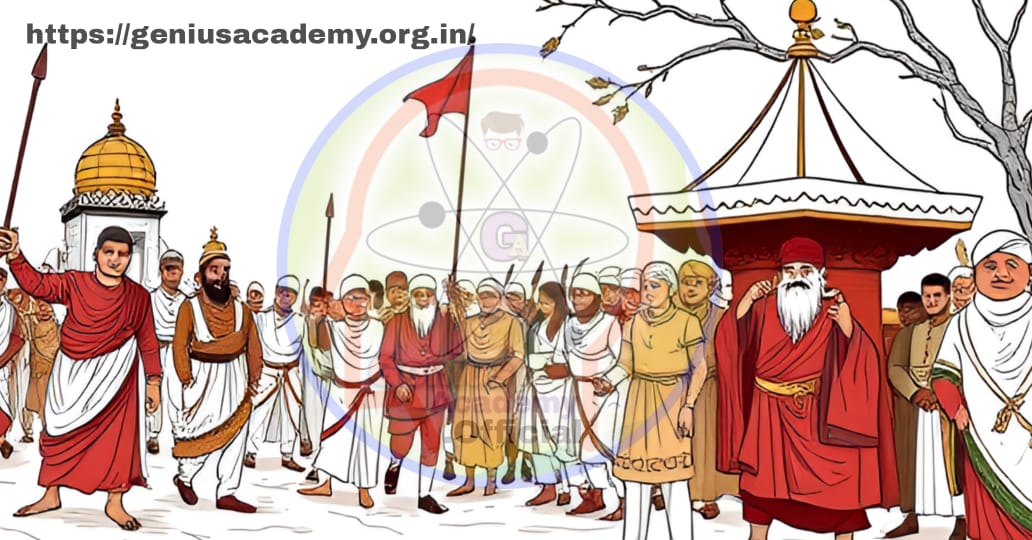Capitalism and the Indian Caste System
Capitalism, as an economic model, has the potential to disrupt entrenched social structures by fostering meritocracy and incentivizing productivity. In India, it has partially challenged the rigid caste system by creating opportunities for marginalized groups to access education, employment, and entrepreneurship. However, capitalism’s inherent tendency to concentrate wealth in fewer hands has exacerbated economic inequalities, particularly for Dalits and Adivasis. This duality—mitigation of caste-based oppression and amplification of economic disparity—requires a nuanced understanding to ensure that economic growth aligns with social equity.
The caste system, one of India’s most enduring social hierarchies, has historically marginalized Dalits through systemic discrimination and exclusion from economic and social opportunities. Untouchability confined Dalits to low-paying, stigmatized occupations, while denying them access to land, education, and public spaces. However, with urbanization and globalization, capitalism has created opportunities for upward mobility, challenging these caste hierarchies to some extent.
Urban centers, driven by market demands, often value performance over lineage. For example, Dalits have found employment in sectors like IT, retail, and finance, where skills take precedence over caste. Similarly, affirmative action policies have allowed marginalized communities to access prestigious educational institutions and higher-paying jobs, breaking long-standing social barriers. Initiatives like the Dalit Indian Chamber of Commerce and Industry (DICCI) have also empowered Dalit entrepreneurs, enabling them to overcome systemic discrimination and create wealth.
While these advancements signify progress, capitalism has also deepened economic inequalities in India. According to Oxfam, the richest 1% of Indians owned 40.5% of the country’s wealth in 2021, while the bottom 50% owned a mere 2.8%. This widening wealth gap disproportionately affects marginalized communities, who are overrepresented among the poor. Historically, upper-caste groups have benefited from generational advantages, including access to land, education, and capital. This pre-existing privilege enables them to leverage capitalist opportunities more effectively, perpetuating economic disparities.
| Data Point | Details |
|---|---|
| 1% | The wealthiest 1% of the Indian population controls 77% of the nation’s total wealth. In 2017, 73% of the wealth generated went to this 1%, while 670 million Indians, who make up the poorest half of the population, saw only a 1% increase in their wealth. |
| 70 | India has 119 billionaires, up from just 9 in 2000 to 101 in 2017. Between 2018 and 2022, India created approximately 70 new millionaires every day. |
| 10x | Over a decade, the wealth of billionaires in India increased nearly tenfold, surpassing the total Union budget for the fiscal year 2018-19 (₹24,422 billion). |
| 63M | Every year, around 63 million Indians fall into poverty due to healthcare expenses, equivalent to nearly two individuals every second. |
| 941 yrs | A rural minimum-wage worker in India would need 941 years to earn what the top executive at a leading garment company earns in a year. (Source) |
Moreover, caste-based discrimination persists in more subtle forms within capitalist systems. Studies by scholars like Sukhadeo Thorat have highlighted biases against Dalits in hiring practices, where they are less likely to be selected despite having similar qualifications as upper-caste candidates. Such systemic barriers undermine the meritocratic ideals of capitalism, trapping marginalized communities in cycles of poverty.
The interplay between capitalism and caste is starkly evident in rural and urban India. In rural areas, landownership remains skewed in favor of upper-caste communities, despite legal reforms. Dalits and Adivasis, often landless, rely on agricultural labor, which provides minimal economic mobility. For instance, in Bihar, entrenched caste hierarchies continue to dominate land distribution, underscoring the persistence of structural inequality.
In urban India, while caste-based untouchability is less overt, economic disparities manifest starkly. Slums like Dharavi in Mumbai house a significant proportion of marginalized communities, who lack access to basic services, education, and healthcare. In contrast, affluent neighborhoods, often occupied by upper-caste groups, enjoy superior infrastructure and amenities. Such contrasts reflect capitalism’s failure to bridge historical inequalities, instead creating new divides.
Education further exemplifies the dual reality of capitalism and caste. While affirmative action policies have enabled marginalized groups to access higher education, the quality of primary education in Dalit and Adivasi communities remains poor. Private schools and universities, which dominate the capitalist education sector, are often inaccessible to the underprivileged due to high costs. This creates a disparity in skill acquisition, limiting the ability of marginalized communities to compete in a market-driven economy.
Addressing the contradictions between capitalism and the caste system requires a multifaceted approach. Strengthening affirmative action policies is critical to ensuring representation of marginalized groups in education and employment, particularly in private-sector jobs. Additionally, promoting inclusive entrepreneurship through programs like Stand-Up India can empower Dalit and Adivasi entrepreneurs by providing access to credit, markets, and mentorship.
Land reforms are another essential step toward economic equity. Redistribution of land and resources can address historical injustices and provide marginalized communities with a foundation for economic independence. For example, the Bhoodan movement, initiated by Vinoba Bhave, offers a model for redistributive policies that can help bridge systemic inequalities.
Investing in education is paramount to achieving social mobility. The government must prioritize public schools in rural and marginalized areas, ensuring quality infrastructure, skilled teachers, and access to digital tools. Vocational training and scholarships for Dalits and Adivasis can further enhance their employability in a competitive market.
Tackling discrimination in employment is equally important. Anti-discrimination laws should be rigorously enforced, and companies must adopt diversity and inclusion policies. Equal opportunity cells can monitor workplace biases and ensure fair hiring practices. Social welfare programs like the Mahatma Gandhi National Rural Employment Guarantee Act (MGNREGA) and universal basic income schemes can provide a safety net for the economically vulnerable, enabling them to participate more effectively in a capitalist economy.
Capitalism’s emphasis on profit-making must be balanced with ethical considerations. Corporate social responsibility (CSR) initiatives should prioritize projects that benefit marginalized communities, addressing inequalities rather than perpetuating them. Moreover, empowering grassroots movements can create systemic change by enabling marginalized communities to advocate for their rights and challenge entrenched inequalities.
Ultimately, capitalism, despite its flaws, is a powerful engine for economic growth. However, its benefits must be equitably distributed to ensure social harmony. A balanced approach that combines market-driven opportunities with robust social safety nets can mitigate capitalism’s excesses while fostering inclusion. Progressive taxation, wealth redistribution, and targeted investments in education and healthcare are necessary to bridge the gap between the privileged and the marginalized.
The intersection of capitalism and the caste system in India illustrates both the potential for progress and the persistence of inequality. While capitalism has disrupted some traditional hierarchies, it has also created new forms of exclusion. Addressing these contradictions requires structural reforms, proactive governance, and community empowerment to build an inclusive society where economic growth and social justice go hand in hand.
India’s journey toward equitable development must prioritize both economic progress and social equity. By addressing systemic inequalities and fostering opportunities for all, the nation can build a society that upholds the dignity and aspirations of every citizen. This is not just an economic imperative but a moral responsibility to create a just and inclusive future.

